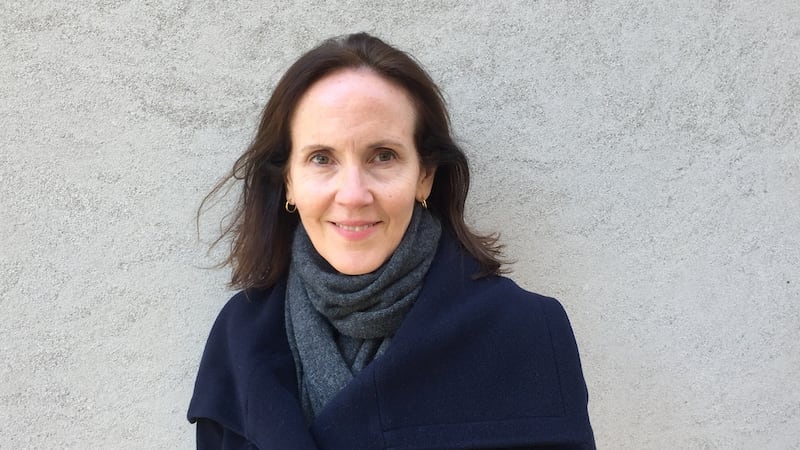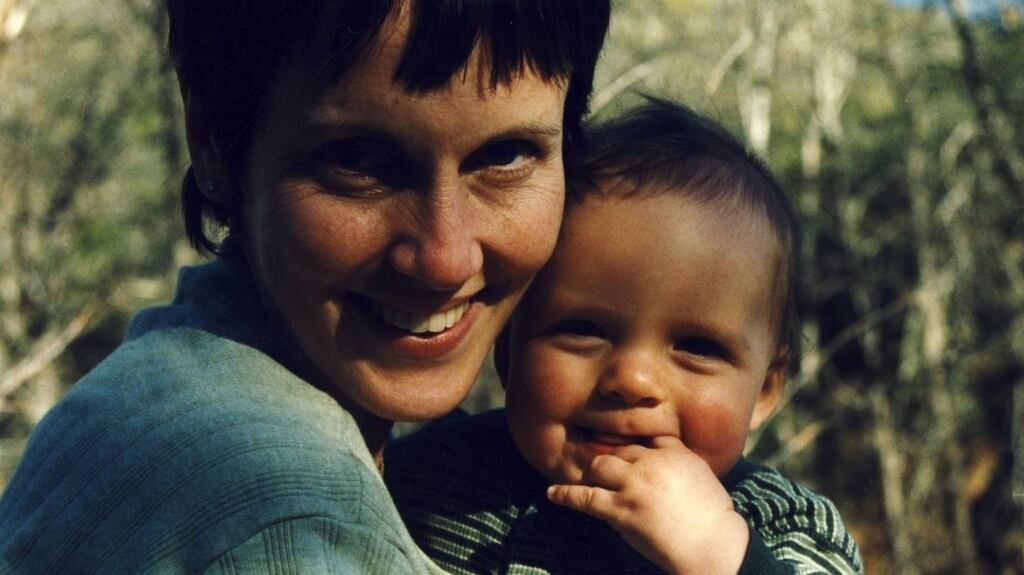Going through a box of old photographs, I came upon one taken long ago at a baby shower in a friend’s New York apartment. I’m seated at the centre of the photograph, wearing a grey winter dress, my eight-month pregnancy mostly hidden behind the gift-box on my lap. I’m 27 years old. A small teddy bear is at my feet beside its crumpled wrapping paper. My husband is to my left, and several of our friends are in the photo as well, drinking, eating, watching me open their presents.

I’m holding up another gift I’ve just unwrapped: a newborn’s onesie in white, sprinkled with tiny bears outlined in pink and blue. Looking at this young woman many years later, I feel a rush of fear and pity for her, unprepared as she is for what will soon unfold: the death of her baby – a girl named Anna – from a congenital malformation called hypoplastic left heart, and a depression so unrelenting that within three months she will be acutely suicidal.
Another photograph sits on my desk. This one was taken 13 years later, after a divorce and remarriage, on a visit to Arizona in the springtime. In the foreground, in close-up, I'm hugging my rosy-cheeked nine-month-old son, his broad forehead and dark hair much like my own, his eyes lit up in a smile as his father snaps the picture. On a hike that day, I had let the baby down from his buggy to test his legs, and watched him grasp the big round boulders along the side of the trail. The photograph was taken a moment later, just as I've lifted him up, and our faces reflect the pleasure of being outdoors in the sunshine. The path between the moments captured in these two photographs was a difficult one: along the way came a pair of suicide attempts, shock treatment, a long stay in a psychiatric hospital, and various antidepressant drugs.
‘Major depressive episode’
When I was diagnosed with a “major depressive episode, with melancholia” in the wake of my first child’s death, I had no idea what the long-term implications of living with that diagnosis would be. I didn’t even grasp that I was facing a long-term situation. Nobody could tell me whether my depression was an inherited vulnerability, or whether it was rooted in my temperament, or my life experience, or to what extent it was a combination of all of these.
Nor could even the most dedicated and sympathetic doctors provide clear answers to what seemed the simplest and most urgent questions: What exactly was depression? Why did some medications work, while others didn’t? Would I ever be able to put it behind me?
I soon realised that depression is a disorder that no one understands well enough – neither the neuroscientists who study it, nor the chemists who seek new treatments for it, nor the doctors who seek to alleviate the suffering it causes.
I first knew I wanted to write about what had happened in the wake of Anna's death when I heard the writer William Styron talk about his suicidal depression and read from the beautiful, hopeful ending of his memoir, Darkness Visible. I wanted to put my experience into words too, because I couldn't shake off the frightening strangeness of it: the darkening of my mind, the nihilism of its interpretations, the loss of any felt connection to my loved ones or my future. I wanted to learn how to protect myself from it.
I know from my own experience that people have trouble understanding what friends or family members with severe depression are going through. This is because we can’t be inside someone else’s mind, of course, but also because people are often reluctant to talk about their depression because it feels so much like failure: failure to be cheerful, optimistic, energetic, sociable, productive – all the things we are expected to be as we move through the world.

I always knew the epigraph for my unwritten book would be “Why not say what happened?” from Robert Lowell’s poem Epilogue. But the book turned out to be much harder to write than this simple question implies, and there were many obstacles that prevented me from simply saying what happened.
For one, it was still too painful to return to the memories of my daughter’s birth and death. For another, since I continued to experience recurring episodes of depression, it seemed too risky, too destabilising, to immerse myself in the state of mind I was in when I was acutely ill and suicidal.
I also couldn’t figure out how to write honestly about the illness without surrendering my privacy. To write about what happened, I would have to reveal that I had attempted suicide, and that I had spent several months in a psychiatric institution where I had many sessions of electro-convulsive therapy – a life-saving treatment that most people associate immediately with the abuses dramatised in the film One Flew Over the Cuckoo’s Nest.
Jagged scar
All of these new elements of my identity, along with the jagged scar on my neck, were profoundly stigmatising. All through graduate school, and as I began teaching in the decade that followed my hospitalisation, it was obviously not something I wanted my students or my professors to know about, or anyone who might hire me. It’s not something you want people to know because they may see you differently, or they may not fully trust you. Who knows how their sense of you might change? I’ve gone through life wanting people to assume that I’m a rational, dependable, normal sort of person, and the best and easiest way to do that is not to talk of it at all.
Eventually, the debate about whether antidepressant drugs were merely expensive placebos, and the depressive diagnoses of two young members of my large Irish-Catholic family, challenged me to return to my past and reckon squarely with this illness and its treatment as fully as possible. I opened a new file on my computer and wrote “Why not say what happened” on the first page.
Over the next five years, I worked through telling my story in the context of a larger history of the illness that used to be called melancholia, and the effort, across several centuries, to find ways to solve its riddle and alleviate its symptoms.
I have learned to live with my depressive illness, managing its shifting moods with exercise and medication and, when needed, sessions with the psychiatrist who has seen me through it all. Thirty-five years have passed since those awful days when my infant daughter died, and I nearly ended my life. The process of writing the book has brought with it an immense gratitude for my life, and also – through my survival – for the life of my son, who graduates from university this year.
I do feel terribly overexposed in having shared what happened with readers, but I can accept the necessity of that if I am able to encourage those who are suffering not to be silent when they’re feeling overwhelmed, hopeless, or suicidal. More than anything, I want to give hope to the countless people who find themselves struggling to cope with internal forces that feel overwhelming but – as I try to convey in my own story – are survivable.
Those in the grip of severe depression – and it seems not a day passes without news of the loss of a fellow sufferer – should take as their mantra a line from Rilke so relevant to all kinds of human trouble that it has become an internet meme: “Just keep going. No feeling is final.”
The Scar by Mary Cregan is published by Lilliput Press. She will be speaking about living with personal trauma at the Borris House Festival of Writing and Ideas this Sunday at 3.30pm. The book will be launched by Anne Enright in Hodges Figgis on June 12th.
Samaritans’ 24-hour freephone helpline is at 116-123; you can also message 087-260 9090 (standard text rates apply) or email jo@samaritans.ie in the Republic or jo@samaritans.org in Northern Ireland









